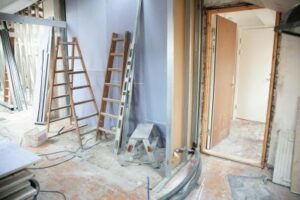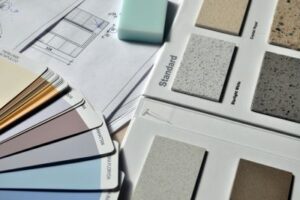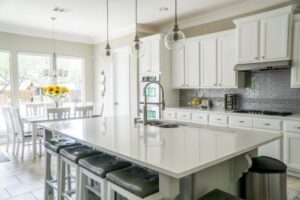Renovating Your House After Water Damage
Homeowners frequently deal with the severe problem of water damage. The aftermath of water damage can be overwhelming, Whether due to a burst pipe, a leaking roof, or a flood. Renovating your house after water damage is not just about fixing what’s broken; it’s about restoring your home’s safety, functionality, and aesthetics. From evaluating the damage to putting preventive measures in place for the future, this in-depth guide will cover all the crucial elements in the renovation process.
Assessing the Damage
Conducting a Thorough Inspection: Conducting a thorough inspection is the first crucial step in renovating your house after water damage. Seeing both evident and obscure damage indicators is part of this. Visibly damaged areas such as waterlogged ceilings, warped floors, and discolored walls are easy to spot. Nevertheless, a comprehensive inspection is required for concealed issues like mold development and structural degeneration and do proper mold remediation service where needed. It’s essential to check behind walls, under flooring, and dark, damp spaces where mold is prone to thrive.
Seeking Professional Assistance: While doing your assessment is a beautiful place to start, professional knowledge is frequently needed to restore water damage. It is best to consult a water damage restoration company when dealing with significant damage. These experts can fully evaluate the damage and have the instruments and expertise to spot concealed problems. Also, to comprehend coverage and guarantee a more seamless claims procedure, you must speak with your insurance provider immediately.

Planning the Renovation
Setting a Budget: Once the extent of the water damage is assessed, the next step is developing a renovation budget. To accomplish this, you must determine the cost of any required modifications, repairs, and replacements. Setting aside money for apparent damage and any hidden problems that can arise during renovation is critical. A carefully thought-out budget guarantees that the remodeling stays within financial bounds and aids in cost management.
Prioritizing Repairs: With a budget in place, it’s time to prioritize repairs. Identify and address immediate concerns that pose safety risks or further damage if left unattended. Fixing structural issues, removing any standing water or dampness, and fixing electrical problems fall under this category. You can start planning long-term upgrades and cosmetic additions after the essential repairs are taken care of. Prioritizing repairs lets you deal with the most severe issues first, preventing further damage and making your home safer.
Water Damage Cleanup
Removing Water and Moisture: After assessing and planning, the next step is to initiate water damage cleanup. The primary goal is to promptly eliminating water and moisture from the affected areas. Professional extraction tools, such as wet vacuums and pumps, eliminate standing water. Once the visible water is removed, specialized drying techniques, such as dehumidifiers and industrial fans, are employed to dry the remaining moisture. To stop mold growth and additional structural damage, thorough drying is essential.
Dealing with Mold Remediation: Mold is a common consequence of water damage, and its presence can lead to health issues and structural decay. Mold removal and identification are steps in the mold remediation process. To guarantee total mold removal, experts employ specific tools and cleaning solutions. It’s also critical to deal with the underlying cause of mold growth, such as a chronic leak or insufficient ventilation. Preventive actions taken during the remodeling phase reduce the possibility of further mold infestations.
Structural Repairs
Assessing and Repairing Structural Damage: Water damage can compromise the structural integrity of a home. Once the initial cleanup is complete, evaluating and repairing any structural damage is crucial. To check for symptoms of deterioration or weakness, examine the walls, flooring, and foundation. Reinforcement might be required in some situations to get the house’s structural stability back. As part of water damage restoration, structural repairs are essential for the refurbished home to be safe and durable in the long run.
Reinforcing Weakened Structures: Reinforcement measures may include adding support beams, strengthening foundations, or repairing damaged load-bearing walls. Based on the degree of the damage, structural engineers can offer insightful advice regarding the required reinforcements. In addition to ensuring occupant safety, addressing structural problems during renovations stops additional damage to the foundation and framework of the house.
Restoring Interior Elements
Replacing Damaged Materials: Restoration of the internal components of the house takes precedence over structural repairs. Replacing broken components, including ceilings, drywall, and flooring, is part of this. The choice of replacement material is crucial, especially in areas that are regularly exposed to water. Selecting water-resistant materials can help keep the remodeled area more durable and guard against future harm. The danger of future water-related problems can also be decreased by installing insulation thoroughly, which can assist in controlling indoor humidity levels.

Upgrading Fixtures and Appliances: As part of the renovation process, consider upgrading fixtures and appliances to water-resistant options. For example, choose water-resistant flooring materials in areas prone to spills or leaks. Invest in appliances with state-of-the-art water leak detection features to reduce the possibility of additional water damage. These upgrades raise the house’s resilience to potential water-related accidents and increase its usability.
Improving Water Management
Enhancing Drainage Systems
Preventing future water damage requires effective water management. Improving drainage systems is a preventative step that aids in water removal from the house. This includes installing proper gutters and downspouts to ensure rainwater is directed away from the foundation. Clogged or improperly installed gutters can lead to water pooling near the home, potentially damaging water. Regularly cleaning gutters and ensuring they are debris-free is essential for maintaining their functionality.
Additionally, evaluating the landscaping around the home is vital. Proper grading and landscaping techniques can prevent water accumulation near the foundation. The slope of the land should direct water away from the house, minimizing the risk of water seepage into basements or crawl spaces. Implementing these safety measures during renovation contributes to developing a comprehensive strategy for managing water resources.
Waterproofing Vulnerable Areas
In addition to improving external drainage, waterproofing vulnerable areas within the home is crucial. Basements and foundations are particularly susceptible to water infiltration. Applying sealants to basement walls and floors can create a barrier against water penetration. Exterior waterproofing coatings for foundations provide an extra layer of protection, preventing water from seeping through porous materials.
Waterproofing techniques are not limited to the basement. Choosing water-resistant materials for walls and floors is advisable in areas with high humidity or frequent water exposure, such as bathrooms and kitchens. Moisture-resistant materials such as tile and vinyl can tolerate exposure to water and require less upkeep and cleaning.
Prevention and Maintenance
Implementing Preventive Measures
Preventing water damage is as important as addressing it after it occurs. The best defense against potential water-related issues for your home is preventive maintenance. Regular inspections for leaks and vulnerabilities should be part of your routine. Look for musty smells, mold, or water stains on walls or ceilings as water damage indicators.
Educate household members about water-saving practices and promptly address minor issues. Encourage drip trays under potted plants, fix leaks as soon as they are detected, and be mindful of water usage in daily activities. Preventing water damage and the need for costly restorations can be achieved through preventive measures and raising awareness.

Developing a Maintenance Schedule
A well-thought-out maintenance schedule is essential for the ongoing health of your home. Regular checks and maintenance of water-related systems, such as plumbing and HVAC, can identify and address potential issues before they escalate. Inspect pipes, fittings, and connections for signs of wear or corrosion. Replace worn-out components and consider upgrading to modern fixtures to minimize the risk of leaks.
Promptly addressing minor issues can prevent them from turning into significant problems. Leaky faucets, loose shingles, or damaged seals may seem insignificant initially, but they can lead to considerable water damage over time. To protect the longevity of your property, create a maintenance checklist that covers both the interior and outside components of your home. Then, follow it religiously.
Conclusion
To put it briefly, carefully planning and carrying out renovating your house after water damage to your home is required. Every phase is essential for fixing and averting further problems, from a thorough examination to preventive actions. Your home’s resilience increases when repairs are prioritized, structural damage is addressed, and materials are updated. Improving drainage and waterproofing strengthens defenses against water intrusion—long-term protection hinges on regular maintenance and preventive actions, like inspections and timely repairs. To provide you with a safe and comfortable living area that will last for years, the objective is to make your living space safer, more durable, and water-resistant.
